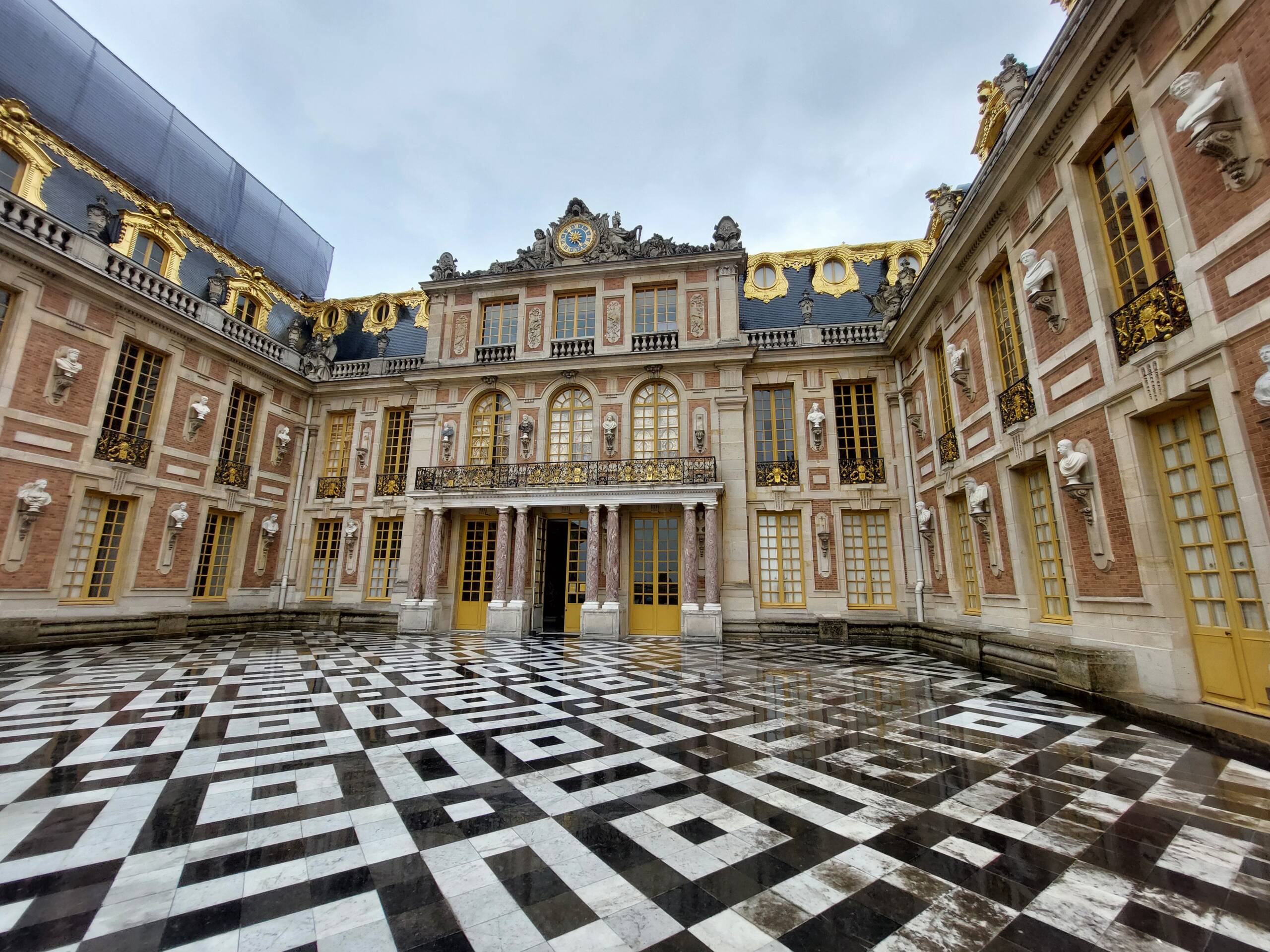Standing in the main courtyard of the Château de Versailles, you feel immediately dwarfed by a spectacle of symmetry and excess. The first thing that strikes the eye is the marble floor beneath your feet, patterned in dizzying black-and-white diamonds and squares that seem almost like an optical illusion. When it rains, as it often does in northern France, the tiles shine like a mirror, doubling the sense of depth and pulling you into a world where geometry becomes part of the theater.

The palace walls rise around you like a perfectly staged set, their pale stone accented by warm brick, gilded balconies, and rows of tall windows with mustard-yellow frames. Classical statues lean out from niches, frozen in postures that give the courtyard a living quality—as if you’ve stepped into a grand performance that never ends. The roofline glitters with gold leaf trim, catching even the softest light on a gray day, reminding you that this was not just a royal residence but an expression of absolute power made solid. Above it all, the ornate clock perched at the center seems less about telling time and more about reminding visitors that Versailles itself was once the measure of time in Europe—the place where the rhythms of court life dictated the calendar for nobles across the continent.
There’s a curious silence here, despite the constant shuffle of tourists. Maybe it’s the way the courtyard closes around you, muffling the world beyond, or maybe it’s because people instinctively lower their voices in places that still carry the weight of history. You can almost imagine the echo of horses’ hooves on this very floor, the rustle of silks sweeping past as courtiers hurried to catch the king’s attention. Versailles doesn’t just show you architecture—it asks you to picture life as it was lived within these walls, with all its pageantry, intrigue, and suffocating protocol.
Walking out of the courtyard, you realize this is only the opening act. The Hall of Mirrors, the manicured gardens, and the endless suites of apartments all lie ahead. But this first encounter sets the tone: Versailles was built to impress, to overwhelm, and to remind every visitor that they were entering not just a palace, but the very heart of royal power in its most theatrical form.
Leave a Reply